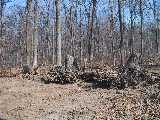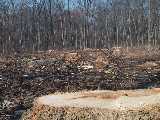|
Yet here is a proposal to build some uninhabited wooden buildings, set way back out of sight, and, as it seems, with no plan in mind to keep them safe. Already, the trustees have felt the need to barricade the entryway to the new clearing from Pinch Road - and there isn't even anything there yet!
|

|

